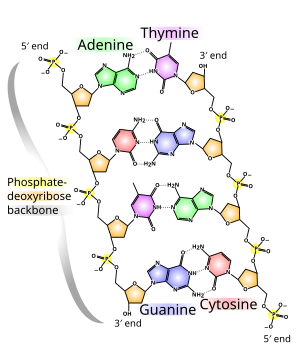Imitating viruses to deliver gene therapy for inherited diseases
 Image via Wikipedia
Image via Wikipedia
Scientists have published an interesting article in the Federation of the American Societies for Experimental Biology (FASEB).
Basically, a gene therapy vector is used to deliver a therapeutic gene or a portion of DNA into a cell nucleus similar to how a syringe is used to inject medicines. To create the new gene therapy vector, the researchers used pieces of different genes to create a protein called a "modular DNA carrier" that can be produced by bacteria. This protein carries therapeutic DNA and delivers it to a cell's nucleus, where it reprograms a cell to function properly.
In the laboratory, these carrier proteins were combined with therapeutic DNA and attached to cell membrane receptors and the nuclear import machinery of target cells. The packaged DNA moved into the cell through the cytoplasm and into the nucleus.
Applications for this approach include inherited genetic diseases, which tend to respond well to gene therapy. This new approach may lead to more a more efficient and effective delivery mechanism by borrowing from the vector approach that uses the same machinery that viruses use to transport their cargo into our cells.
![]() Glover, D., Ng, S., Mechler, A., Martin, L., & Jans, D. (2009). Multifunctional protein nanocarriers for targeted nuclear gene delivery in nondividing cells The FASEB Journal, 23 (9), 2996-3006 DOI: 10.1096/fj.09-131425
Glover, D., Ng, S., Mechler, A., Martin, L., & Jans, D. (2009). Multifunctional protein nanocarriers for targeted nuclear gene delivery in nondividing cells The FASEB Journal, 23 (9), 2996-3006 DOI: 10.1096/fj.09-131425
![Reblog this post [with Zemanta]](http://img.zemanta.com/reblog_e.png?x-id=22338ccc-ad00-4c67-bb48-a442008b8fcb)
One Response to “Imitating viruses to deliver gene therapy for inherited diseases”
Gene therapy has long been at the centre of debate surrounding its effectiveness and safety which can probably be owed to our somewhat limited knowledge of such procedures. We can only hope that extensive research and new findings such as this will bolster the reputation of the treatment and make it readily available as a combatant for many diseases.
Comments are closed.